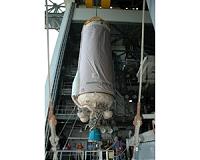 |
Tewksbury MA (SPX) Nov 03, 2010 Raytheon Company has completed a successful system design review (SDR) for the Space Fence program. Space Fence will provide the U.S. Air Force enhanced space surveillance capability to track and detect space objects. "As our nation's defense becomes increasingly more dependent on the space domain, a system like Space Fence will be a critical component in the Space Surveillance Network, tracking tens of thousands of objects daily," said David Gulla, vice president, National and Theater Security Programs for Raytheon Integrated Defense Systems (IDS). "This successful SDR and prototyping clearly demonstrates the readiness of our design to support the Air Force's needs with an affordable solution." The SDR included the prototyping of critical system elements to demonstrate increased technical and manufacturing readiness levels. "We've partnered with the Air Force on requirements trade studies and analysis, balancing cost, capability and technical maturity to deliver a system that provides critical space situational awareness capability to the warfighter," said Scott Spence, program director, Space Fence program for Raytheon IDS. "I'm extremely proud of our Raytheon team. We're confident we can support the Air Force's need for an initial operating capability in 2015 and look forward to the next phase of the program." The Space Fence program is a multiphase acquisition leading to the delivery of up to three globally positioned S-band radars capable of interoperation with the Space Surveillance Network. The system will ensure there is no gap in capability as the current systems in the network reach the end of their life spans.
Share This Article With Planet Earth
Related Links - Space Technology News - Applications and Research
 Where Is the New Horizons Centaur Stage
Where Is the New Horizons Centaur StageBoulder CO (SPX) Nov 03, 2010 When New Horizons launched at 2 p.m. Eastern time on January 19, 2006, its first Atlas V stage and solid rocket boosters fell back to Earth within minutes of launch, never entering orbit. New Horizons then proceeded on to Earth orbit aboard its Atlas V's powerful Centaur second stage, which then re-ignited to propel itself, New Horizons and its STAR-48 third-stage solid rocket out of Earth ... read more |
|
| The content herein, unless otherwise known to be public domain, are Copyright 1995-2010 - SpaceDaily. AFP and UPI Wire Stories are copyright Agence France-Presse and United Press International. ESA Portal Reports are copyright European Space Agency. All NASA sourced material is public domain. Additional copyrights may apply in whole or part to other bona fide parties. Advertising does not imply endorsement,agreement or approval of any opinions, statements or information provided by SpaceDaily on any Web page published or hosted by SpaceDaily. Privacy Statement |